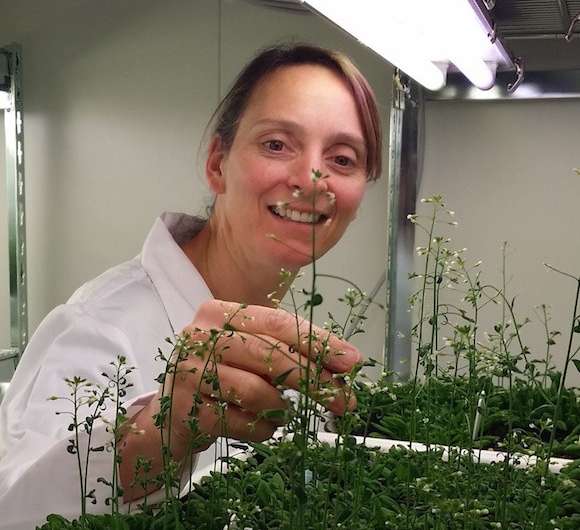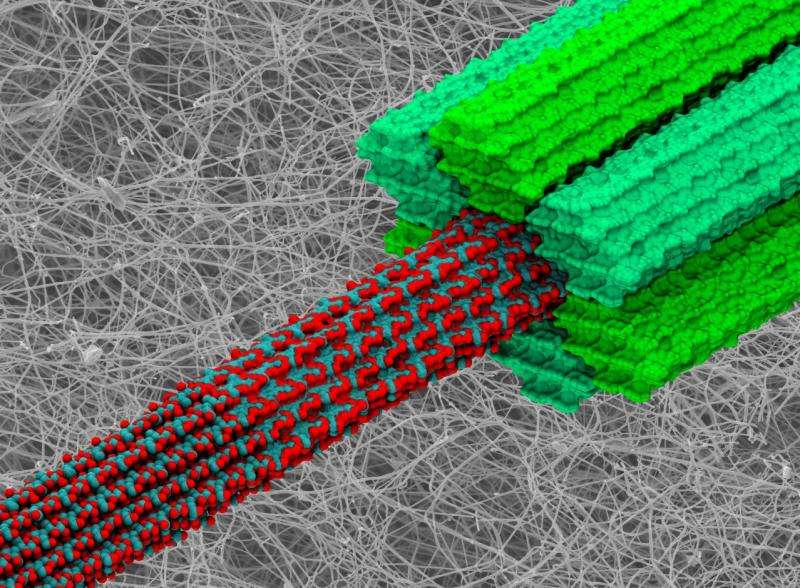Supercomputer unlocks the secrets of plant cells to create more resilient crops

Scientists from he Universities of Melbourne and Queensland and IBM Research have moved a step closer to identifying the nanostructure of cellulose – the basic structural component of plant cell walls that provide fibre in our diet.
The insights could pave the way for more disease resistant varieties of crops and increase the sustainability of the pulp, paper and fibre industry – one of the main uses of cellulose.
Tapping into IBM's supercomputing power, researchers have been able to model the structure and dynamics of cellulose at the molecular level.
Dr Monika Doblin, Research Fellow and Deputy Node Leader at the School of BioSciences at the University of Melbourne said cellulose is a vital part of the plant's structure, but its synthesis is yet to be fully understood.
"It's difficult to work on cellulose synthesis in vitro because once plant cells are broken open, most of the enzyme activity is lost, so we needed to find other approaches to study how it is made," Dr Doblin said.
"Thanks to IBM's expertise in molecular modelling and VLSCI's computational power, we have been able to create models of the plant wall at the molecular level which will lead to new levels of understanding about the formation of cellulose."
The work, which was described in a recent scientific paper published in Plant Physiology, represents a significant step towards our understanding of cellulose biosynthesis and how plant cell walls assemble and function.
The research is part of a longer-term program at the Victorian Life Sciences Computation Initiative (VLSCI) to develop a 3D computer-simulated model of the entire plant wall.
Cellulose represents one of the most abundant organic compounds on earth with an estimated 180 billion tonnes produced by plants each year.

A plant makes cellulose by linking simple units of glucose together to form chains, which are then bundled together to form fibres. These fibres then wrap around the cell as the major component of the plant cell wall, providing rigidity, flexibility and defence against internal and external stresses.
Until now, scientists have been challenged with detailing the structure of plant cell walls due to the complexity of the work and the invasive nature of traditional physical methods which often cause damage to the plant cells.
Dr John Wagner, Manager of Computational Sciences, IBM Research – Australia, called it a 'pioneering project'.
"We are bringing IBM Research's expertise in computational biology, big data and smarter agriculture to bear in a large-scale, collaborative Australian science project with some of the brightest minds in the field. We are a keen supporter of the Victorian Life Sciences Computation Initiative and we're very excited to see the scientific impact this work is now having."
Using the IBM Blue Gene/Q supercomputer at VLSCI, known as Avoca, scientists were able to perform the quadrillions of calculations required to model the motions of cellulose atoms.
The research shows that within the cellulose structure, there are between 18 and 24 chains present within an elementary microfibril, much less than the 36 chains that had previously been assumed.
IBM Researcher, Dr. Daniel Oehme, said plant walls are the first barrier to disease pathogens.
"While we don't fully understand the molecular pathway of pathogen infection and plant response, we are exploring ways to manipulate the composition of the wall in order to make it more resistant to disease."
More information: Study paper: www.plantphysiol.org/content/168/1/3.full
Provided by University of Melbourne


















